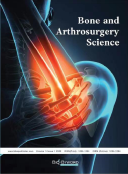Abstract
Objective: To determine the most common pathologies of lower back pain and the proportion of Bertolotti syndrome (BS) among these pathologies and to reveal possible gender-age differences, and to group the lumbosacral transitional vertebrae (LSTV) according to Castellvi classification and find their prevalence rates. Method: The images and reports of 357 patients who underwent magnetic resonance imaging (MRI) of the sacroiliac joint between March 2020 and October 2021, mostly due to low back pain, were evaluated by a radiologist specialized in musculoskeletal radiology. Results: The mean ages of patients with and without BS were 43.9 years old and 44 years old, respectively, and there was no correlation between BS and patient age (P = 0.976). The age range of patients with BS was 15–77 years old. Twenty per cent of the patients with BS were younger than 30 years old and 50% were younger than 40 years old. No gender difference was observed among patients with BS (P = 0.572). The prevalence rates if LSTVs according to Castellvi classification, were 10% in Type 1a, 11.4% in Type 1b, 35.7% in Type 2a, 17.1% in Type 2b, 4.3% in Type 3a, 12.9% in Type 3b and 8.6% in Type 4. The main pathologies causing lower lumbar pain were active-chronic sacroiliitis, vertebral and disc degenerations, and facet joint arthrosis, while BS comes after, with 2.8%. In BS, the pain originated from the lumbosacral transitional vertebrae. Conclusion: According to our results, BS starts to be seen below the age of 30 years, but there is no significant relationship with age or gender. BS is one of the most common causes of lower lumbar pain after sacroiliitis, vertebral degeneration, and discopathy. There are different hypotheses in the literature about the etiology of BS and there is no common opinion. Therefore, there is a need for multicenter studies with large sample sizes.
References
Ravikanth R, Majumdar P, 2019, Bertolotti’s Syndrome in Low-Backache Population: Classification and Imaging Findings. Ci Ji Yi Xue Za Zhi, 31(2): 90–95.
Mahato NK, 2013, Redefining Lumbosacral Transitional Vertebrae (LSTV) Classification: Integrating the Full Spectrum of Morphological Alterations in a Biomechanical Continuum. Med Hypotheses, 81: 76–81.
McGrath K, Schmidt E, Rabah N, et al., 2021, Clinical Assessment and Management of Bertolotti Syndrome: A Review of the Literature. Spine J, 21(8): 1286–1296.
Quinlan JF, Duke D, Eustace S, 2006, Bertolotti’s Syndrome. A Cause of Back Pain in Young People. J Bone Joint Surg Br, 88(9): 1183–1186.
Castellvi AE, Goldstein LA, Chan DP, 1984, Lumbosacral Transitional Vertebrae and Their Relationship with Lumbar Extradural Defects. Spine (Phila Pa1976), 9: 493–495.
Bernard SA, Kransdorf MJ, et al., 2017, ACR Appropriateness Criteria Chronic Back Pain Suspected Sacroiliitis-Spondyloarthropathy. J Am Coll Radiol, 14(5S): S62–S70.
Tini PG, Wieser C, Zinn WM, 1977, The Transitional Vertebra of the Lumbosacral Spine: Its Radiological Classification, Incidence, Prevalence, and Clinical Significance. Rheumatol Rehabil, 16(3): 180–185.
Luoma K, Vehmas T, Raininko R, et al., 2004, Lumbosacral Transitional Vertebra: Relation to Disc Degeneration and Low Back Pain. Spine (Phila Pa 1976), 29: 200–205.
Mahato NK, 2011, Facet Dimensions, Orientation, and Symmetry at L5?S1 Junction in Lumbosacral Transitional States. Spine (Phila Pa 1976), 36: E569–E573.
Elster AD, 1989, Bertolotti’s Syndrome Revisited: Transitional Vertebrae of the Lumbar Spine. Spine (Phila Pa 1976).14:1373?1377.11.
Connolly LP, d'Hemecourt PA, Connolly SA, et al., 2003, Skeletal Scintigraphy of Young Patients with Low-Back Pain and a Lumbosacral Transitional Vertebra. J Nucl Med, 44(6): 909–914.
Apazidis A, Ricart PA, Diefenbach CM, et al., 2011, The Prevalence of Transitional Vertebrae in the Lumbar Spine. Spine J, 11: 858–862.
Kaya T, 2017, Basic Principles of Radiography and Basic Principles of Radiographic Interpretation. Trd Sem, 5: 1–22.
Kapetanakis S, Chaniotakis C, Paraskevopoulos C, Pavlidis P, 2017, An Unusual Case Report of Bertolotti’s Syndrome: Extraforaminal Stenosis and L5 Unilateral Root Compression (Castellvi Type III an LSTV). J Orthopaed Case Rep, 7(3): 9–12.
